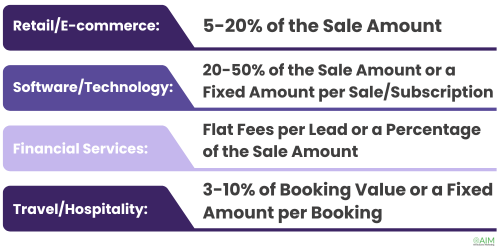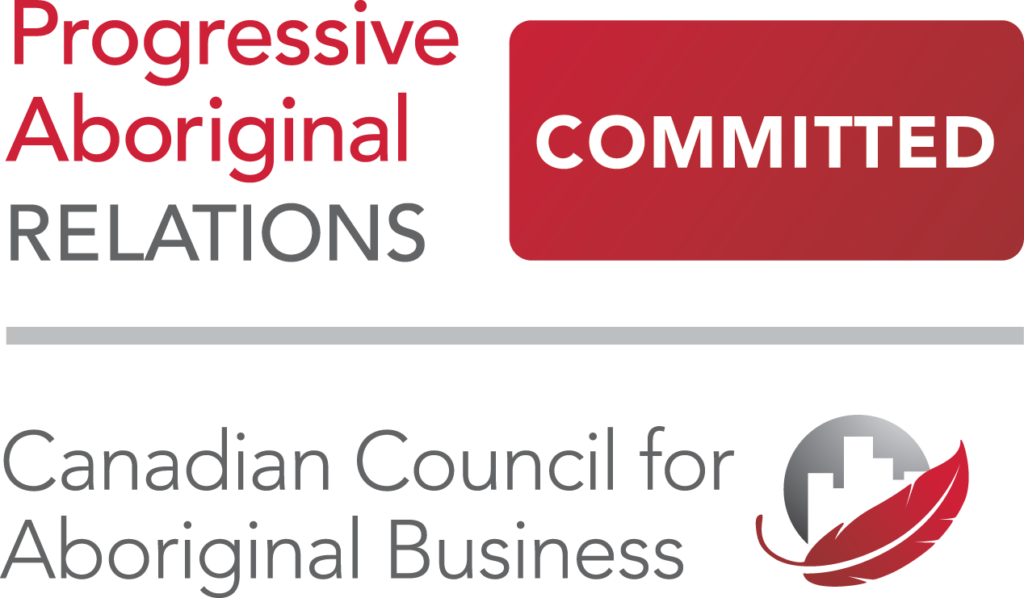When diving into the affiliate marketing space, a dynamic avenue for brands to amplify their influence and boost sales is revealed. However, central to the success of any affiliate marketing strategy is the commission structure. It’s not just about enticing affiliates to promote your products or services, but also about ensuring a fair and mutually beneficial arrangement for both parties involved. In this article, let’s explore the intricacies of commission structures, various payout models, and highlight some best practices to maximize your affiliate program’s effectiveness.
Understanding Commission Structures
Commission structures in affiliate marketing dictate how referral partners (also known as affiliates, publishers, partners, or even creators) are compensated for driving desired actions; such as sales, leads, or clicks. There are several common commission models:
- Cost-Per-Sale (CPS): Affiliates are rewarded with a commission for each sale they generate. The commission is typically a percentage of the sale amount. For example, an affiliate might earn a 10% commission on each product sold through their referral link.
- Cost-Per-Lead (CPL): Affiliates earn a commission for each qualified lead they deliver to the brand. The lead could involve signing up for a trial, filling out a form, or subscribing to a newsletter.
- Cost-Per-Click (CPC): Affiliates are paid based on the number of clicks their referral links receive; regardless of whether those clicks result in sales or leads. CPC can be a suitable option for brands looking to increase website traffic or visibility.
- Cost-Per-Action/Acquisition (CPA): This model encompasses a broader range of actions beyond sales and leads, such as downloads, app installs, or video views. Affiliates receive an agreed-upon compensation for each completed action.
Average Commission Payouts
Determining the right commission structure requires understanding your industry, target audience, and product margins. While there’s no one-size-fits-all approach, industry benchmarks can offer insights to help you choose your commission range. Here are a variety of commission payout examples across different industries to provide a starting point for your consideration*.

*These figures can serve as a starting point, but it’s important to assess your unique circumstances and competitive landscape when setting commission rates.
Tracking Sales and Leads
When it comes to tracking affiliate-driven actions, it’s not just about sales and leads. Brands can track a variety of actions and conversions, ensuring affiliates are credited for their efforts across the entire customer journey.
Here are a range of actions and conversions that brands can track, ensuring affiliates are duly rewarded:
Product Purchases: The most common conversion tracked in affiliate marketing is product purchases. Affiliates are credited with a commission whenever a customer purchases through their referral link.
Lead Generation: Beyond purchases, brands can track leads generated by affiliates. This could include sign-ups for newsletters, free trials, or account registrations.
App Installs: For brands with mobile applications, affiliates can be credited for driving app installs. This is particularly relevant for mobile-focused industries such as gaming or e-commerce.
Form Submissions: Brands can track form submissions initiated by affiliate referrals. This could include contact forms, quote or demo requests, or survey completions.
Content Engagement: Affiliates can also be credited for driving content engagement metrics, such as time spent on site, page views, or video views. This is especially valuable for brands focused on content marketing or brand awareness.
Event Registrations: If a brand hosts events or webinars, affiliates can be credited for driving registrations, ticket sales, or RSVPs.
Designing Custom Commission Amounts
Tailoring commission amounts based on the affiliate’s performance, value proposition, and the specific actions you want to incentivize can enhance program effectiveness. Consider offering tiered commission structures, bonuses for top performers, or exclusive deals for strategic partners.
Designing custom commission amounts based on the affiliate’s performance, value proposition, and the specific actions you want to incentivize can significantly enhance the effectiveness of your affiliate program. This tailored approach ensures that rewards align closely with desired outcomes, maximizing the program’s impact.
Here are three instances demonstrating how various industries can tailor their commission structures to optimize engagement with their affiliate partners:
Travel Brands: For travel brands, it’s vital to encourage not just bookings but also other valuable actions to enhance the customer experience. Besides paying commissions for bookings, they can introduce tiered commission systems based on booking value or popular destinations. Brands can also offer bonuses to top-performing affiliates driving bookings in peak seasons or promoting specific packages. Strategic partnerships with travel influencers or bloggers could be rewarded with exclusive deals or higher commissions to leverage their influence in the travel community.
Retail Brands: Retail brands can customize commission structures to promote not only product sales but also customer loyalty and repeat purchases. Affiliates may earn higher commissions upon reaching sales thresholds, encouraging them to promote more and boost sales. Brands can offer bonuses for affiliates bringing in new customers or consistently driving sales in specific product categories. To motivate affiliates further, brands can provide exclusive deals, discounts, or early access to new products to their top performers.
B2B/SaaS Brands: B2B/SaaS brands can design commission structures to match the unique acquisition and retention goals of the software industry. Apart from compensating for new subscriptions or licenses, they can introduce tiered commissions based on subscription plans or contract lengths customers choose. Bonuses can be offered for affiliates generating leads converting into demo requests or product trials. To further motivate affiliates, brands can provide exclusive deals, discounts, or access to co-branded marketing materials, assisting them in effectively promoting the software solution to their audience.
Negotiating Commission Rates
Negotiating commission rates with affiliates is a delicate balance between incentivizing performance and maintaining profitability. This act requires finesse and a strategic approach to ensure a mutually beneficial partnership. Here are some dos and don’ts to keep in mind during negotiations:
Dos
Be Transparent: Openly communicate your budget constraints and the rationale behind your commission structure. Transparency builds trust and fosters a collaborative relationship with your affiliates.
Highlight Value Proposition: Clearly articulate the unique value proposition of your products or services. Emphasize how affiliates stand to benefit from promoting your brand. This can include, but is not limited to competitive commission rates, high conversion rates, or exclusive offers for their audience.
Focus on Long-Term Benefits: Emphasize the long-term benefits of a mutually beneficial partnership. Highlight how investing in a fair commission structure can lead to sustainable growth, increased revenue, and continued success for both parties.
Be Open to Compromise: Negotiation is about finding common ground. Be flexible and open to compromise, considering factors such as affiliate performance, market dynamics, and industry standards. Finding a win-win solution is key to building a strong and sustainable partnership.
Don’ts
Underestimate Affiliate Value: Avoid undervaluing the contributions of your affiliates. Recognize the significant role they play in driving sales, leads, and brand awareness. Investing in fair commission rates is crucial for attracting and retaining top affiliate partners.
Neglect Competitive Analysis: Don’t overlook a competitive analysis when determining commission rates. Research what other brands in your industry are offering to ensure your rates are competitive and attractive to potential affiliates.
Rush the Negotiation Process: Negotiation takes time and careful consideration. Avoid rushing the process or making hasty decisions. Take the time to thoroughly evaluate proposals, gather feedback from stakeholders, and explore creative solutions that benefit both parties.
Overpromise and Underdeliver: Avoid making unrealistic promises or commitments during negotiations. Be honest about what you can offer and make sure you can deliver on your commitments. Overpromising and underdelivering can damage trust and credibility with your affiliates.
Managing Affiliate Requests and Expectations
Managing affiliate commission and payout requests and expectations is critical for maintaining a smooth and mutually beneficial partnership. Here are some ways to do that:
Clear Communication: Communicate commission structures, payout schedules, and expectations to affiliates from the outset.
Transparency: Be transparent about the criteria for commission eligibility and the process for requesting payouts.
Timely Response: Respond to affiliate requests for commission payouts and address any concerns or inquiries in a timely manner.
Consistency: Maintain consistency in commission calculations and payout processes to build trust and reliability with affiliates.
Flexibility: Be flexible in accommodating reasonable payout requests. Consider negotiating terms when necessary to accommodate affiliate needs while ensuring profitability for your business.
In Conclusion
Choosing the right affiliate model and commission structure is essential for the success of your affiliate marketing program. One must understand the intricacies of various payout models, utilize industry benchmarks, and adopt best practices for tracking and managing affiliates. This approach fosters substantial growth and ensures a robust ROI for your brand.











